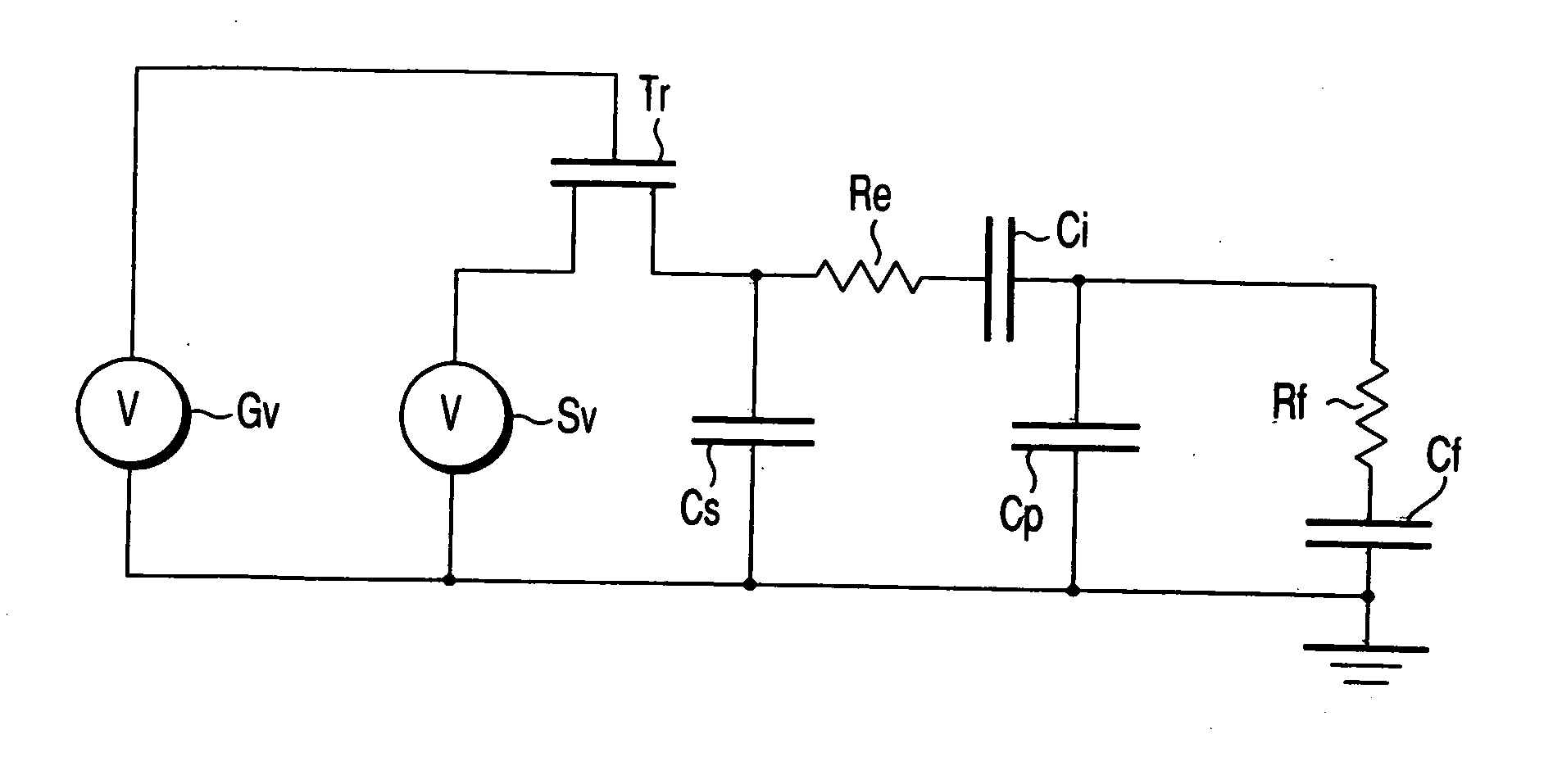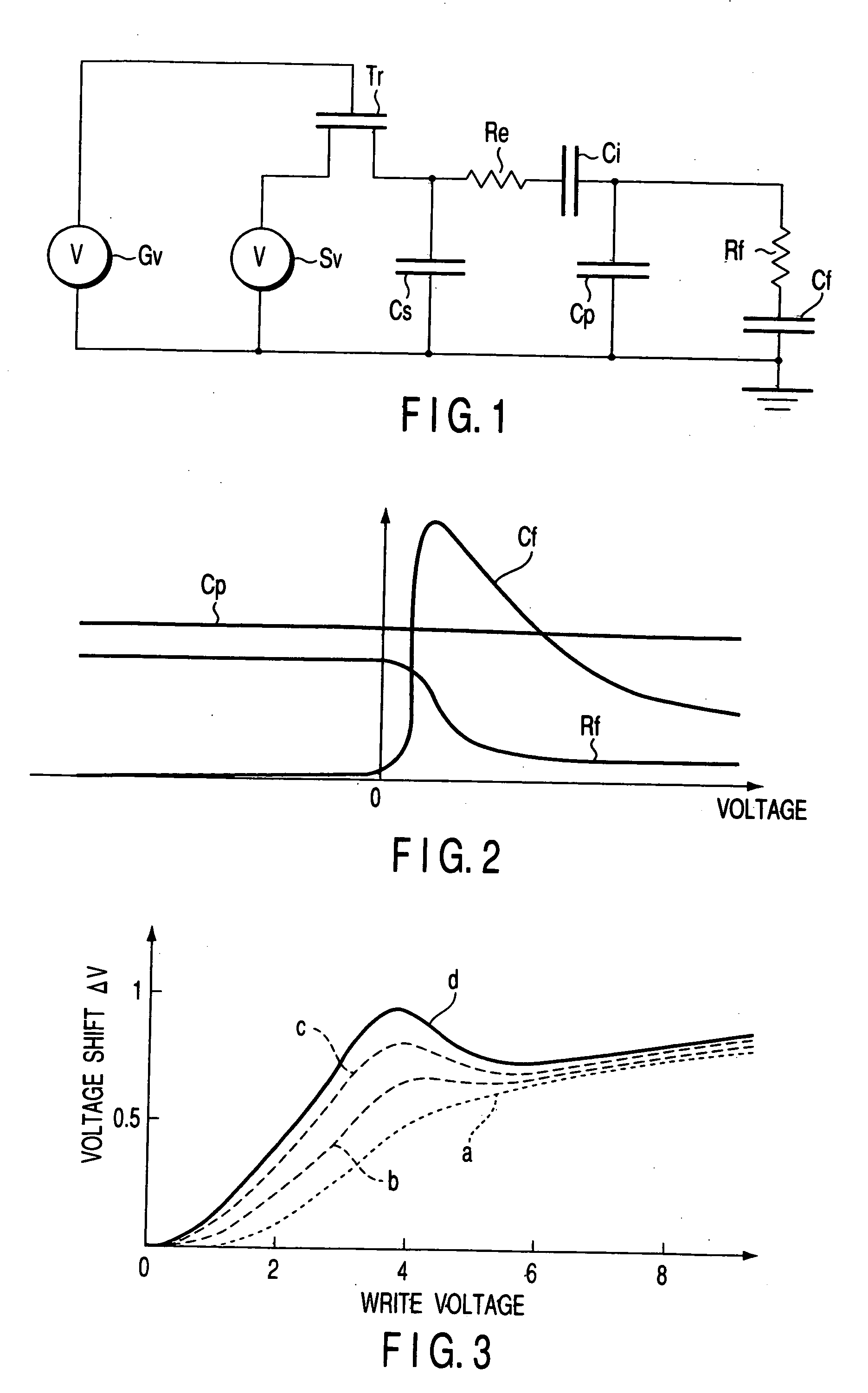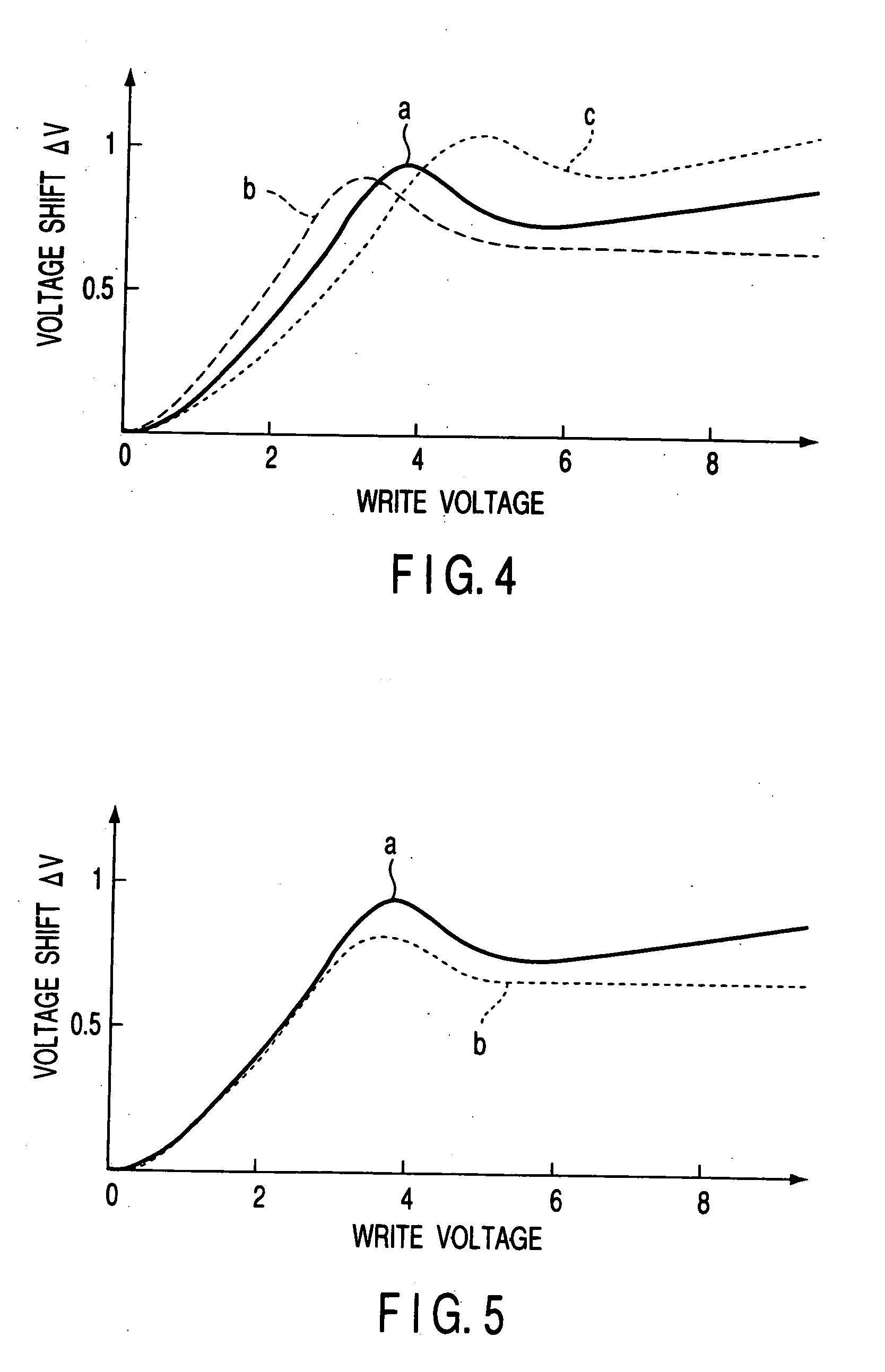Liquid-crystal display driving device
a technology of liquid crystal display and driving device, which is applied in the direction of static indicating device, non-linear optics, instruments, etc., can solve the problems of image blurring effect image blurring effect,
- Summary
- Abstract
- Description
- Claims
- Application Information
AI Technical Summary
Benefits of technology
Problems solved by technology
Method used
Image
Examples
Embodiment Construction
[0027] First, the basic principles of an embodiment of the present invention will be described.
[0028]FIG. 1 shows an equivalent circuit model of the liquid crystal display device according to the embodiment of the present invention.
[0029] In FIG. 1, Cf represents the capacitance corresponding to spontaneous polarization of the liquid crystal layer (asymmetric response liquid crystal), Rf the resistance for representing the speed of response (corresponding to Cf×Rf) of the liquid crystal layer, Cp the normal dielectric capacitance of the liquid crystal layer (capacitance at high frequencies), Ci the capacitance of insulating films (including an alignment film) interposed between the liquid crystal layer and electrodes, Re the electrode-associated resistance, and Cs the storage capacitance. Further, Tr represents a thin-film transistor (TFT) used as a switching element, Gv a control signal source for on-off control of the thin-film transistor Tr, and Sv a display signal source that ...
PUM
| Property | Measurement | Unit |
|---|---|---|
| thickness | aaaaa | aaaaa |
| DC voltage | aaaaa | aaaaa |
| DC voltage | aaaaa | aaaaa |
Abstract
Description
Claims
Application Information
 Login to View More
Login to View More - R&D
- Intellectual Property
- Life Sciences
- Materials
- Tech Scout
- Unparalleled Data Quality
- Higher Quality Content
- 60% Fewer Hallucinations
Browse by: Latest US Patents, China's latest patents, Technical Efficacy Thesaurus, Application Domain, Technology Topic, Popular Technical Reports.
© 2025 PatSnap. All rights reserved.Legal|Privacy policy|Modern Slavery Act Transparency Statement|Sitemap|About US| Contact US: help@patsnap.com



